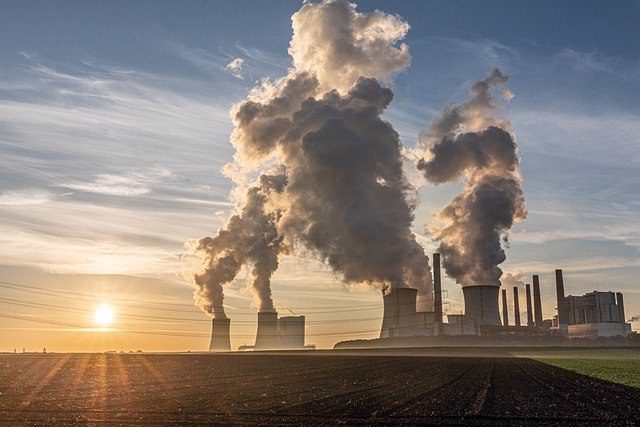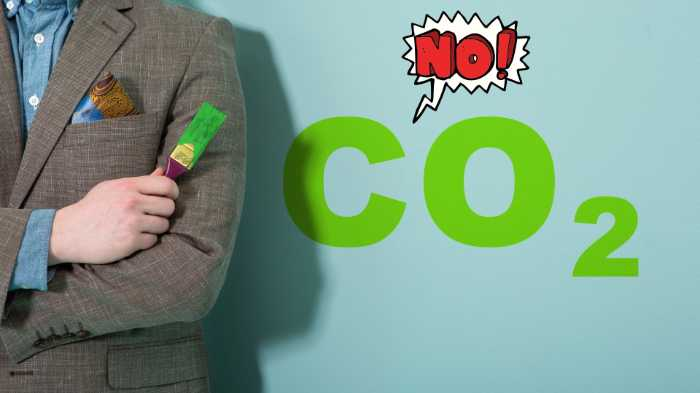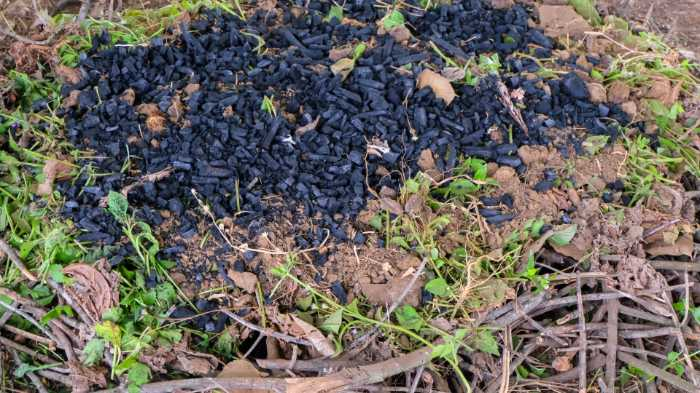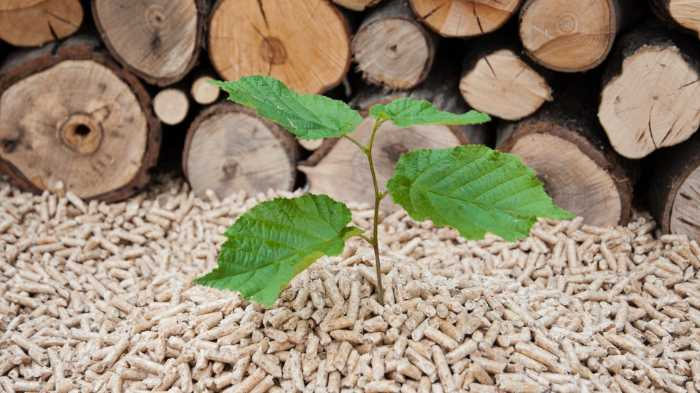
The idea behind this method of geoengineering involves capturing carbon dioxide from industries, power plants, and other sources, then storing them deep underground as a way to reduce carbon in the atmosphere. This is called “BECCS” which stands for Bioenergy with Carbon Capture and Storage. It could be used to curb climate change in the future.
- How does BECCS work?
- What is the goal of BECCS?
- What is geoengineering?
- Why do we need geoengineering?
- What are the risks of geoengineering?
- Is BECCS a proven technology?
- Is BECCS a safe technology?
- Why is BECCS good?
- Is BECCS a viable solution to climate change?
- Is BECCS being used?
- Where are the BECCS projects located?
- What are the potential applications of BECCS?
- How much would it cost to implement BECCS on a global scale?
- What are the challenges of BECCS?
- What are negative emissions technologies?
- What is bioenergy?
- What is carbon capture and storage?
- What is biochar?
- What is the difference between BECCS and bioenergy?
- What is biomass?
- What is carbon capture and sequestration?
- What is carbon capture and utilization?
- In conclusion carbon dioxide and BECCS
- FAQs
How does BECCS work?
BECCS works by combining two technologies: sustainable bioenergy, and carbon capture and storage (CCS). Bioenergy is the use of plants to create energy, while CCS captures carbon dioxide emissions from sources like power plants and factories before they enter the atmosphere. The captured carbon dioxide is then transported and stored deep underground in places like saline aquifers and depleted oil and gas fields.
What is the goal of BECCS?
The goal of BECCS is to prevent carbon emissions from affecting the atmosphere and contributing to climate change. It is one of a number of geoengineering methods that could be used to get par with the Paris climate agreement which is an international treaty against global warming.
What is geoengineering?

Geoengineering is the deliberate modification of Earth’s environment on a large scale, usually to counteract climate change. There are a number of different geoengineering techniques, but BECCS is one of the most promising. Another example of geoengineering is solar radiation management, which involves spraying reflective particles into the atmosphere to reflect sunlight back into space and cool the planet.
Why do we need geoengineering?
Geoengineering is needed because current efforts to reduce greenhouse gas emissions aren’t enough to prevent climate change from happening. Emissions from factories, vehicles, and other sources continue to contribute to the climate crisis, even though we’re starting to see some positive results from reducing emissions. But it is now evident that we need to take more drastic measures to address climate change, and geoengineering is one of those measures.
What are the risks of geoengineering?
The risks of geoengineering are still being studied, but there are always side effects when we play with Mother Nature. Australia has many examples of man’s attempts at bio-engineering that have gone wrong, but they are not alone. Non-native invasive species are in every corner of the world, either in animal or plant variations.
As for the side effects of geoengineering for example, solar radiation management could have unintended consequences like altering the Earth’s climate or disrupting rainfall patterns. There is also the risk that geoengineering could be used for nefarious purposes, like controlling the weather or weaponizing the environment.
Is BECCS a proven technology?
No, BECCS is still in the research phase and has not been proven to work on a large scale. However, there is evidence that it could be effective in reducing carbon dioxide emissions. There are also a number of pilot projects underway that are testing the feasibility of BECCS.
Is BECCS a safe technology?
There is still a lot we don’t know about the safety of BECCS, but there is potential for it to be safe if done correctly. The key is to make sure the carbon dioxide is transported and stored safely so that it doesn’t escape into the atmosphere. There is also a risk of leaks from the storage sites, which could have harmful consequences for the environment. But it is the 11th hour of climate change, and we need solutions today.
Why is BECCS good?
The benefits of BECCS include reducing greenhouse gas emissions and helping to mitigate climate change. It is also a renewable energy source, meaning that it doesn’t rely on fossil fuels. BECCS could help to create a more sustainable future by reducing our reliance on fossil fuels and other harmful forms of energy.
Is BECCS a viable solution to climate change?
That is still to be determined, but there is potential for BECCS to be a viable solution to climate change. It is one of the most promising geoengineering techniques available, and there are a number of pilot projects underway that are testing its feasibility. However, more research is needed to determine whether BECCS is a safe and effective way to curb climate emergency.
Is BECCS being used?
Currently, there are five facilities around the world that are actively using BECCS technologies. Collectively, these facilities are capturing approximately 1.5 million tonnes per year (Mtpa) of CO2. There are also a number of related pilot projects underway that are testing the feasibility of BECCS on a global scale. And although these numbers may be small, the overall project is showing promise.
Where are the BECCS projects located?
The Illinois Industrial CCS facility, which captures up to 1 Mtpa of CO2, is the only large-scale 2 BECCS plant. This Archer Daniels Midland plant in Decatur, Illinois, generates CO2 as part of the fermentation process and converts corn into ethanol. The CO2 is stored at a deep underground storage location onsite.
The four BECCS facilities that are still operational today are small-scale ethanol production plants, which use the majority of the CO2 for enhanced oil recovery (EOR); including:
- Kansas Arkalon (USA): CO2 from an ethanol plant in Kansas is captured and sent to Booker and Farnsworth Oil Units in Texas for EOR.
- Bonanza CCS (USA): CO2 from an ethanol factory in Kansas is captured and transported to the nearby Stewart Oil field for EOR.
- Husky Energy CO2 Injection in Canada (Lashburn, Saskatchewan) 250 tonnes of carbon dioxide are compressed and trucked from an ethanol plant in Saskatchewan to adjacent Lashburn and Tangleflags oil fields for EOR; the reservoirs are deep (~500m) and contain heavy oil.
- Farnsworth (USA): The ethanol and fertilizer plants in Kansas and Texas compressed 600,000 tonnes of CO2, which was sent to the Farnsworth oil field for EOR. The injection has now stopped as part of DOE/NETL SouthWest Partnerships Development Phase, but monitoring the injected CO2 at an ongoing EOR
Three additional projects about enhanced oil recovery are planned on BECCS:
- Mikawa Power Plant (Japan): An existing 49-megawatt power plant in Omuta, Fukuoka Prefecture, was converted to accept 100 percent biomass with a CO2 recovery facility. The search for an offshore storage location is now the priority.
- Drax Power Plant (UK): A biomass power generating pilot in North Yorkshire with the potential to implement CO2 capture and storage
- The third option is for a Full-Chain CCS operation in Norway, which includes BECCS integration into waste-to-energy and cement manufacturing.
- The Klemetsrud waste-to-energy plant is under construction, with a planned capture capacity of 400,000 tpa of CO2.
- Norcem Cement Plant: Currently co-firing up to 30% biomass and intends to capture up to 400,000 tpa of CO2.
- Both facilities will send their CO2 to a multi-user storage site in the Norwegian North Sea.
What are the potential applications of BECCS?
The potential applications of BECCS include reducing greenhouse gases from factories, power plants, and other sources. The greatest carbon producers include:
- Industrial processes (iron and steel, cement, chemical production)
- Electricity generation (coal, natural gas, oil)
- Transportation (vehicles, aircraft, shipping)
- Agriculture (livestock farming, fertilizer manufacture)
How much would it cost to implement BECCS on a global scale?
There is still a lot of uncertainty around the cost of BECCS, but it is estimated that it could be expensive. The costs would likely be borne by the public and private sectors, and would likely require significant investment from both parties. But like all new technologies, the cost will likely come down over time as the technology is refined and scaled up.
What are the challenges of BECCS?
The challenges of BECCS include:
- Determining whether it is a safe and effective way to curb the climate crisis
- Making sure the carbon dioxide is transported and stored safely
- Developing the infrastructure necessary to implement BECCS on a global scale
- The potential for leaks from the storage sites
- The cost of implementing BECCS
What are negative emissions technologies?

Negative emissions technologies are a suite of technologies that are designed to remove CO2 from the atmosphere. This can be done in a variety of ways, including carbon storage, reforestation, and biochar. BECCS is one of the most promising negative emissions technologies available and has the potential to reduce greenhouse gas emissions on a global scale.
What is bioenergy?
Bioenergy is energy derived from plant or animal material. This can include wood, energy crops, waste products, and biogas. Bioenergy can be used to generate heat, electricity, or transportation fuels. For example, wood can be burned to produce heat, ethanol can be used to generate fuel, and bioenergy crops can be used to generate electricity.
What is carbon capture and storage?
Carbon capture and storage (CCS) is the process of capturing carbon dioxide from sources like power plants and industrial facilities and then storing it permanently underground. This can be done in a variety of ways, including carbon capture and sequestration, carbon capture and utilization, and carbon capture and recycling. CCS is one of the most promising negative emissions technologies available and has the potential to reduce greenhouse gas emissions on a global scale.
Bioenergy with carbon capture and storage (BECCS) is a type of CCS that involves using biomass to generate energy, while the carbon dioxide captured can be stored permanently underground. This makes BECCS a negative emissions technology, as it results in the removal of carbon dioxide from the atmosphere.
What is biochar?

Biochar is charcoal that is made from plant or animal material. It is similar to regular charcoal but has a higher carbon content. Biochar can be used as a soil amendment to increase fertility and help retain moisture. It can also be used to produce biogas, which can then be used to generate heat or electricity.
What is the difference between BECCS and bioenergy?
Bioenergy is the general term for all forms of energy derived from plant or animal material. BECCS is a specific type of bioenergy that uses carbon capture and storage to reduce greenhouse gas emissions. Biochar is another type of bioenergy that can be used to improve soil quality and produce biogas.
What is biomass?

Biomass is an organic material that can be used to produce energy. This includes plants, trees, manure, and organic waste. It can be used to generate heat, electricity, or transportation fuels. Sustainable biomass is a renewable resource and has the potential to reduce greenhouse gas emissions on a global scale.
What is carbon capture and sequestration?
Carbon capture and sequestration means capturing carbon dioxide and storing it permanently underground. The process is somewhat complicated but involves trapping emissions from power plants and other sources before they enter the atmosphere. The carbon dioxide is then compressed and transported to a storage site where it is injected into porous rock formations or aquifers.
The process of carbon capture and sequestration has been around for many years but only recently has there been interest in using it as a way to curb climate change. This is because of the growing concern over the amount of carbon dioxide in the atmosphere and its impact on global temperatures.
BECCS, or bioenergy with carbon capture and sequestration, is a method that involves using plants to capture carbon dioxide from the air. The carbon dioxide is then stored underground and used as a fuel for power plants
What is carbon capture and utilization?
Carbon capture and utilization is the process of capturing carbon dioxide from the atmosphere and using it for beneficial purposes. This can be done through a variety of methods, including carbon capture and storage (CCS) and carbon capture and use (CCU). Examples of carbon capture and utilization include:
- Converting carbon dioxide into useful products, such as fuels, plastics, and industrial chemicals
- Growing crops that absorb carbon dioxide from the atmosphere
- Recycling carbon dioxide back into oil and gas fields to increase production
- Generating electricity from biomass-powered plants that capture and use carbon dioxide
In conclusion carbon dioxide and BECCS
So what can we do to prevent environmental damage and reduce our reliance on fossil fuels? Bioenergy with carbon capture and sequestration (BECCS) is one promising solution. This carbon capture technology uses plants or trees to generate biomass energy while capturing the Carbon emissions from the plant and storing them underground. BECCS has the potential to provide large amounts of renewable energy without causing an abrupt climate change. The question we all need to ask ourselves is: what would you do to prevent climate impacts?
FAQs

What is zero carbon?
Zero carbon means that the net emissions of a particular activity or process are at zero. This can be achieved by either reducing greenhouse gas emissions to net-zero or by removing an equivalent amount of CO2 from the atmosphere, offsetting, or sequestration. In order to achieve the zero-carbon feat, organizations need to remove carbon dioxide, stop the use of fossil energy, and even deliver negative emissions. Moreover, a carbon-zero status will also provide a lower-cost energy future for the organization.
What is a carbon cycle?
A carbon cycle is a natural process through which carbon atoms are recycled and reused. Carbon dioxide is removed from the atmosphere through a number of different processes, including photosynthesis by plants, ocean absorption, and land-use changes. Each process has both advantages and disadvantages in terms of overall climate benefits. Understanding these trade-offs is essential to making informed decisions about which carbon removal methods are most effective for different types of organizations.
How important is carbon removal to reach negative emissions?
Carbon removal is essential to reach carbon neutral and eventually negative emissions. This can be achieved through a number of different methods, including bioenergy with carbon capture and storage (BECCS), direct air capture (DAC), and afforestation/reforestation. BECCS is by far the most commonly used method of negative emissions, accounting for over 80% of all negative emissions in the world.
What are the most common hurdles in getting carbon neutral?
The most common hurdles in getting carbon neutral are:
- Lack of awareness/information
- Financial barriers
- Technological barriers
- Regulatory barriers
How good is MSW incineration?
Municipal solid waste (MSW) combustion is considered to be one of the most effective ways to generate energy while also reducing greenhouse gas emissions. However, Municipal waste incineration often faces strong public opposition due to concerns about air pollution and human health.
Flue gas produced by MSW incineration contains a number of pollutants, including carbon dioxide (CO2), nitrogen oxides (NOx), sulfur dioxide (SO2), and particulate matter (PM). While some of these pollutants can be controlled through the use of emissions-control technologies, others are more difficult to control. For example, CO2 emissions from MSW incineration are typically higher than those from other types of waste combustion due to the higher carbon content of MSW. As a result, MSW incineration is often considered to be a less climate-friendly option than other waste management options.
What are the most climate-friendly energy options?
Forestry residues, agricultural residues, and unused natural gas reservoirs can all play a role in providing climate-friendly options for energy. Together, they offer the potential to help reduce emissions while also providing a source of renewable energy. However, each option has its own set of pros and cons that need to be considered before a decision can be made.

Dean Emerick is a curator on sustainability issues with ESG The Report, an online resource for SMEs and Investment professionals focusing on ESG principles. Their primary goal is to help middle-market companies automate Impact Reporting with ESG Software. Leveraging the power of AI, machine learning, and AWS to transition to a sustainable business model. Serving clients in the United States, Canada, UK, Europe, and the global community. If you want to get started, don’t forget to Get the Checklist! ✅
